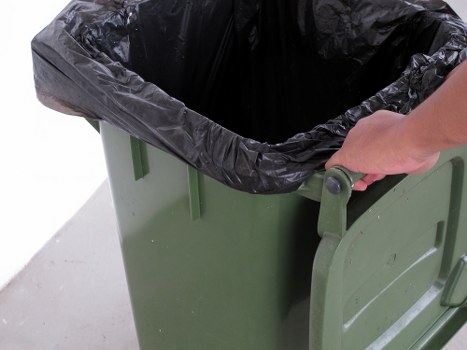Comprehensive Guide to Construction Waste Clearance in Stratford

Understanding Construction Waste in Stratford
Construction projects, whether large or small, inevitably produce a significant amount of waste. In Stratford, managing this waste efficiently is crucial to maintaining the area's aesthetic appeal and environmental health. Construction waste clearance plays a pivotal role in ensuring that construction sites remain clean and safe for workers and the surrounding community.
Waste generated from construction activities can range from leftover materials like bricks, concrete, and wood to packaging materials and other debris. Proper disposal of these materials not only helps in maintaining a clean environment but also supports sustainable building practices.
In Stratford, the importance of effective waste management cannot be overstated. With the area's ongoing development, efficient construction waste clearance helps in reducing landfill usage and minimizing the carbon footprint associated with construction activities.

Types of Construction Waste
1. **Inert Waste**
Inert waste comprises materials that do not undergo significant physical, chemical, or biological transformations. Examples include bricks, concrete, stones, and tiles.
Characteristics of Inert Waste
- Non-reactive
- Non-biodegradable
- Reusable and recyclable
2. **Hazardous Waste
Hazardous waste includes materials that pose risks to health, safety, or the environment. Common hazardous wastes in construction include asbestos, lead-based paints, and certain chemicals.
Handling Hazardous Waste
- Requires specialized handling and disposal
- Subject to strict regulations
- Must be managed by certified professionals

Regulations Governing Construction Waste Clearance in Stratford
Local Government Regulations
Stratford has implemented stringent regulations to manage construction waste effectively. These regulations ensure that waste is disposed of responsibly, minimizing environmental impact.
Key Regulatory Requirements
- Segregation of waste at the source
- Proper labeling and storage
- Use of licensed waste carriers
Environmental Compliance
Compliance with environmental standards is mandatory for all construction projects in Stratford. This includes adherence to guidelines that reduce pollution and promote the recycling of materials.
Benefits of Compliance
- Prevents legal penalties
- Promotes sustainable practices
- Enhances company reputation

The Process of Construction Waste Clearance
1. **Assessment and Planning**
The first step in effective construction waste clearance is a thorough assessment of the site to identify the types and quantities of waste generated. This information helps in planning the most efficient clearance strategy.
Key Steps in Assessment
- Site inspection
- Waste categorization
- Volume estimation
2. **Segregation of Waste
Once assessed, waste needs to be segregated based on its type and recyclability. Proper segregation facilitates easier handling and disposal, ensuring that recyclable materials are appropriately processed.
Segregation Techniques
- Color-coded bins
- Dedicated storage areas
- Training for workers
3. **Collection and Transportation
After segregation, the waste is collected and transported to designated disposal or recycling facilities. Using licensed carriers ensures that the waste is handled in compliance with local regulations.
Transportation Best Practices
- Secure packaging to prevent spillage
- Route planning for efficiency
- Timely transportation to minimize site clutter

Benefits of Professional Construction Waste Clearance Services
Efficiency and Expertise
Professional waste clearance services have the expertise and resources to handle construction waste efficiently. They are equipped with the necessary tools and knowledge to manage different types of waste effectively.
Advantages of Hiring Professionals
- Time-saving
- Compliance with regulations
- Access to recycling facilities
Cost-Effectiveness
While hiring professional services may seem like an additional expense, it can be cost-effective in the long run. Proper waste management reduces the risk of fines and penalties and can lead to savings through recycling and reuse of materials.
Financial Benefits
- Reduced landfill fees
- Potential revenue from recyclable materials
- Avoidance of regulatory fines

Environmental Impact of Construction Waste Clearance
Reducing Landfill Usage
Effective construction waste clearance reduces the volume of waste sent to landfills. This not only conserves landfill space but also minimizes the environmental footprint of construction projects.
Strategies to Minimize Landfill Waste
- Maximizing recycling and reuse
- Implementing waste reduction practices
- Choosing sustainable materials
Promoting Sustainable Construction Practices
Sustainable construction practices involve minimizing waste generation and promoting the use of eco-friendly materials. Proper waste clearance is integral to achieving sustainability in construction.
Elements of Sustainable Construction
- Use of recycled materials
- Energy-efficient building techniques
- Eco-friendly waste management

Choosing the Right Construction Waste Clearance Service in Stratford
Factors to Consider
When selecting a waste clearance service, it's important to consider several factors to ensure you choose a reliable and efficient provider.
Key Considerations
- Licensing and certifications
- Experience and expertise
- Range of services offered
Questions to Ask Potential Services
To make an informed decision, ask potential service providers questions regarding their processes, compliance, and pricing.
Essential Questions
- Are you licensed and insured?
- How do you handle hazardous waste?
- What are your pricing structures?
Evaluating Service Providers
Evaluate service providers based on their responsiveness, professionalism, and ability to meet your specific needs. Reading reviews and seeking recommendations can also aid in making the right choice.
Evaluation Tips
- Check online reviews and testimonials
- Request references
- Assess their customer service

Cost Factors in Construction Waste Clearance
Volume of Waste
The amount of waste generated directly affects the cost of clearance services. Larger volumes require more resources and time, resulting in higher costs.
Estimating Waste Volume
- Assess project scale
- Identify types of materials
- Plan for future waste generation
Type of Waste
The nature of the waste also impacts the cost. Hazardous and specialized waste materials often require additional handling and disposal measures, increasing expenses.
Handling Hazardous Waste
- Specialized disposal methods
- Increased labor costs
- Compliance with regulations
Service Provider Rates
Different service providers have varying pricing structures based on their services, expertise, and location. It's essential to obtain detailed quotes to compare and choose the most suitable option for your budget.
Comparing Quotes
- Request itemized estimates
- Understand what is included
- Look for hidden fees

Best Practices for Effective Construction Waste Clearance
Implementing Waste Management Plans
Developing and adhering to a comprehensive waste management plan ensures systematic and efficient waste clearance throughout the construction project.
Components of a Waste Management Plan
- Waste identification and categorization
- Roles and responsibilities
- Timeline and milestones
Training and Education
Educating workers on proper waste management practices fosters a culture of responsibility and ensures that waste is handled correctly from the outset.
Training Programs
- Regular workshops
- Instruction on segregation techniques
- Safety protocols
Monitoring and Evaluation
Continuous monitoring of waste management processes helps in identifying areas for improvement and ensures that the clearance efforts remain effective throughout the project.
Monitoring Strategies
- Regular site inspections
- Tracking waste volumes
- Feedback mechanisms

Innovations in Construction Waste Clearance
Recycling Technologies
Advancements in recycling technologies have made it easier to process and reuse construction materials, reducing the overall waste generated.
Modern Recycling Methods
- Automated sorting systems
- Advanced material processing
- Energy-efficient recycling facilities
Digital Waste Tracking
Digital tools and software allow for real-time tracking of waste generation and clearance, enhancing the efficiency and accountability of waste management processes.
Benefits of Digital Tracking
- Improved accuracy in waste reporting
- Streamlined communication
- Data-driven decision making
Sustainable Disposal Methods
Innovative disposal methods focus on minimizing environmental impact by emphasizing reduction, reuse, and recycling over traditional landfill disposal.
Eco-Friendly Disposal Techniques
- Composting organic waste
- Using waste-to-energy processes
- Implementing zero-waste strategies

Case Studies: Successful Construction Waste Clearance in Stratford
Residential Development Project
A recent residential project in Stratford successfully implemented an effective waste clearance strategy by partnering with a professional waste management service. This collaboration resulted in a significant reduction in landfill waste and enhanced recycling rates.
Key Achievements
- 50% reduction in waste sent to landfills
- 80% of materials recycled
- Improved site safety and cleanliness
Commercial Construction Initiative
A commercial construction initiative utilized advanced waste tracking software to monitor and manage waste generation. This approach ensured efficient waste clearance and compliance with local regulations.
Project Highlights
- Real-time waste monitoring
- Enhanced waste segregation
- Cost savings through optimized waste management
Public Infrastructure Project
A public infrastructure project in Stratford utilized sustainable disposal methods, focusing on minimizing environmental impact. The project successfully achieved its sustainability goals through effective waste clearance practices.
Success Factors
- Adoption of zero-waste strategies
- Use of recycled materials
- Community engagement and awareness

Challenges in Construction Waste Clearance
Complexity of Waste Management
Managing construction waste involves navigating complex regulations and varying waste types, making it a challenging aspect of construction projects.
Overcoming Complexity
- Partnering with knowledgeable service providers
- Staying updated with regulations
- Implementing clear waste management plans
Cost Constraints
Budget limitations can impact the extent and quality of waste clearance efforts. Balancing cost with effective waste management requires strategic planning and resource allocation.
Cost Management Strategies
- Optimizing waste segregation
- Prioritizing recyclable materials
- Negotiating service contracts
Logistical Issues
Logistical challenges such as limited access to disposal sites and transportation inefficiencies can hinder effective waste clearance.
Addressing Logistical Challenges
- Efficient route planning
- Collaborating with multiple carriers
- Investing in on-site waste processing

Future Trends in Construction Waste Clearance
Increased Recycling and Reuse
The future of construction waste clearance lies in enhancing recycling and reuse practices. Innovations in material processing and recycling technologies will play a significant role in this evolution.
Anticipated Developments
- Advanced sorting technologies
- Expanded recycling facilities
- Greater emphasis on circular economy principles
Automation and AI
Automation and artificial intelligence are set to revolutionize waste management, making the process more efficient and reducing human error.
Impact of Technology
- Automated waste sorting
- Predictive maintenance for waste processing equipment
- AI-driven waste management systems
Sustainability Integration
Integration of sustainability into waste clearance practices will become more prevalent, focusing on reducing the environmental impact of construction projects.
Strategies for Sustainability
- Adopting green building standards
- Utilizing renewable energy in waste processing
- Promoting sustainable material sourcing

Conclusion
Effective construction waste clearance in Stratford is essential for maintaining a clean and sustainable environment. By understanding the types of waste, adhering to regulations, and partnering with professional services, construction projects can minimize their environmental impact and contribute to the community's well-being.
Embracing best practices and staying informed about future trends will further enhance waste management efforts, ensuring that Stratford continues to thrive as a modern and environmentally responsible city.
Take Action Now!
Don't let construction waste overwhelm your project. Contact us today to book your waste clearance service and contribute to a cleaner, greener Stratford.